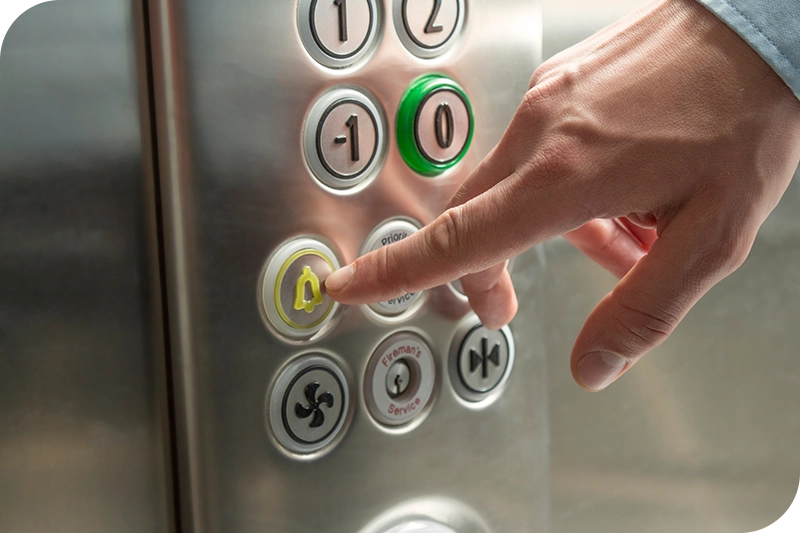Elevator modernization: are you ready for 4G?
 Camilla Ashdown, 30. 03. 2023 | 5 min read
Camilla Ashdown, 30. 03. 2023 | 5 min read
A major technological change is underway, and you need to be ready for elevator modernization!
A lot of essential systems used in the elevator industry use mobile networks for the connectivity of various technological devices. Some of the biggest mobile carriers have already revealed their plans and timeframe for a complete transition to 4G technology.
But what will happen when 2G and 3G networks shut down? Is your infrastructure ready for such a significant change? How much time do you have for a replacement? Is it really that serious? Find out!

Emergency communication for the 21st century
Elevator emergency communication, or elevator emergency phones, have been pretty much the same for the past 15 years, and the “only” technological change was the usage of mobile networks instead of fixed lines (PSTN). There are 2 main reasons why this is changing.
The first is that regulation has become more demanding in terms of the functionality the elevator emergency phone must provide. The second reason is that essential changes are happening in the telco providers’ infrastructure which will result in the shutting down of legacy networks and the consequent inability to use installed devices. Let’s explore why changes are inevitable, their impact on the elevator industry, and which factors must be considered when building a future-proof solution for elevator modernization.
The sun is setting on traditional fixed lines and 2G & 3G cellular networks
By traditional networks, we mean analogue 2 wire networks (POTS), dominant in the 19th and 20th centuries. Today, however, such a network is obsolete. Maintenance is too expensive, network management is complicated, and the revenue stream was hugely impacted by the competition of mobile networks.
 Stay up-to-date with the latest news. Subscribe to our newsletter.
Stay up-to-date with the latest news. Subscribe to our newsletter.
Similar to the situation in the traditional fixed-line world, cellular networks are changing as well. We have lived with 2G (GSM) networks for almost 30 years, and with 3G (UMTS) networks for 20 years. This is quite a long time, considering how the whole landscape of IT has changed in the same time frame.
We all carry very powerful mobile phones that consume huge amounts of data, and mobile carriers have had to adapt to this demand. Current cellular networks are built in the ‘4th generation’, commonly known as 4G (LTE). 4G is available as standard in most heavily populated areas and cities around the world: and a lot are even transitioning to 5G. Most mobile providers have already revealed plans of shutting down old 2G and 3G networks to utilize their frequencies in favour of faster, more modern 4G or 5G networks. Of course, such a huge change is not going to happen overnight, but in general, it’s expected to happen between 2021 and 2025. This varies from country to country.
What does it mean? Elevator companies must adapt. Their IT infrastructure must be updated for lift modernization and to be able to handle these changes at a minimal cost.
How does this impact the elevator industry?
In the past, the only way to connect the elevator emergency phone was via fixed lines. After the rise of 2G (and then 3G) mobile networks, emergency communicators were connected to these networks via devices called analogue gateways. The advantages of using mobile networks were apparent:
- Quicker installation
- Independent of customer’s infrastructure
- Cheaper tariffs
- Remote management (to a limited extent)
Most elevator emergency phones in the field depend on 2G and 3G gateways. This means that the shutdown of 2G and 3G networks will cause all these emergency systems to stop working. The moment the operators stop operating these networks, the elevator communicators will lose the connection to the control room and trapped passengers will not be able to make an emergency call for help. This may also have legal implications, as a malfunctioning communicator will not meet the requirements of EN 81-28.
The only way how to prevent this turn-off is the total replacement of installed devices for 4G gateways. One might think it will be an easy task to change one box for another, however, there are some hitches that make a seemingly simple replacement complicated. One of them is DTMF transmission. Modern codecs (a form of digitised voice data) used in 4G may promise HD quality voice transmission, but on the other hand most of them distort the information transmitted via DTMF. However, this information is crucial for emergency communication in the elevator . The distortion of the DTMF signal is even more serious if the call is transmitted between different networks and has to be transcoded for these networks.
There are already some gateways on the market which offer 4G and are based on VoLTE technology, but these can’t guarantee reliable DTMF transmission either. The only way to solve the network shutdown and avoid the troubles with DTMF distortion is to choose a proper 4G gateway. Such a VoIP gateway should be based on the standard SIP protocol to ensure smooth voice and data transmission.
How to start your
Considering all mentioned factors forming today and tomorrow’s telco and the IT world, the only way to enter the future goes hand in hand with transformation to full IP. Partnering with companies with strong competency in VoIP will save you time, and money, and help you to increase your reputation on the market. Here are some rules of thumb:
- Find out the 2G and 3G shutdown plans of your mobile carrier and region
- Set a long-term strategy for gateway replacement and elevator modernization
- Find and test out VoIP gateways
- Run pilot projects
- Begin with mass deployment according to your strategy
Conclusions
We are standing at the beginning of changes that will define emergency communication for the next decade! Inevitable changes in communication network technologies will have a huge impact on all elevator companies, so get ready for the 4G, and VoIP shifts as soon as possible.